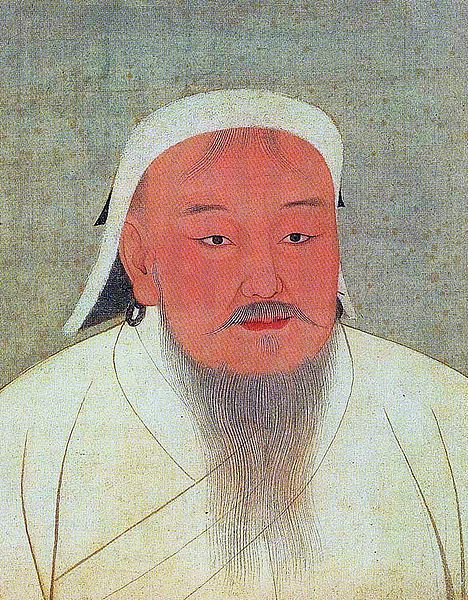
Genghis Khan created the Mongol Empire, the biggest empire in human history. At its height, the Mongol Empire covered a land area of more than 9.15 million square miles and a population of more than 100 million. Another surprising fact is that the population of Mongols was only a few million.
Why were Mongols able to conquer the world with such a tiny population? One important reason is that Genghis Khan created a specialized organization that could leverage the most advanced technology at the time (Mongolian horses) to solve the most ambitious problem (conquering the world).
Despite the small number of human soldiers, there were a huge number of horses in the Mongol army. Each Mongol soldier has 3-4 Mongolian horses at his disposal at any time. Mongolian horses had very great endurance and were the most advanced military technologies during the cold-weapon era. In contrast, their enemies either don’t have any horses or could only use inferior horses.
More importantly, Genghis Khan organized his Mongol soldiers in a way that could leverage the advantages of those Mongolian horses to the full extent. The command structure of the Mongol army was much more flexible than other armies during the period. Lower-level leaders have significant license to execute orders in the way they considered best. The super flexible organization allowed Mogol armies to attack en masse, divide into smaller groups to encircle and lead enemies into an ambush, or divide into small groups to mop up a fleeing and broken army. Because they could fully leverage the mobility of horses, a few Mongolian cavalry soldiers could easily defeat hundreds of foot soldiers.
Thanks to horses, the Mongolian army could cover up to 100 miles (160 km) per day, which was unheard of by other armies of the time. Mongolian soldiers were able to travel thousands of miles without stopping by rotating horses during the trip. Because of such great mobility, the Mongol empire could allocate resources on a global scale to defeat every local enemy. For example, the Mongols were able to fight with both the Muslim world and China at the same time. After Mongols conquered Muslims, they were able to leverage the technology they got from Muslims (like the counterweight trebuchet) to destroy the Song dynasty.
Genghis Khan and his Mongolian armies have taught us two things:
- New technology requires a new form of human organization to fully leverages its power.
- An organization that could leverage the new power would be able to unlock even more new opportunities.
In the past few decades, we are creating new technologies to extend our brains. One notable new technology is artificial intelligence (AI), which allows machines to make predictions and decisions autonomously. The relationship between the new AI tools and humans is similar to horses and Mongolian soldiers.
A business would need to transform its organizational structure to fully leverage the power of AI tools.
- For a lot of traditional businesses, the bottom of the organizational chart is a huge number of employees who work on operational tasks. As a result, management is based on carrots and sticks. More advantage management like (motivation alignment) is only available for strategic positions.
- In AI-first organizations, even junior employees will have hundreds of AI tools at his/her disposal and their influence on the organization is equivalent to a much higher-level person in those traditional organizations. Organizational management needs to be more motivation-driven throughout the organization. The organization also (is able to ) and needs to be leaner and flatter, which encourages innovation.
Proactively leveraging AI tools not only reduces cost but also unleashes new powers (like horses do to Genghis Khan’s troops).
- The natural way of organizational growth is to throw hiring humans. However, more people would create a communication burden and operational overhead. As an organization grows, the Return-On-Investment (ROI) of extra hiring will eventually decrease to be below 1, which prevents the company to scale further.
- “Hiring” AI systems, in contrast, would not incur extra overhead. What’s more, AI systems typically get smarter as more people use them. As a result, the ROI will increase as the usage of the AI system increases.
The only ceiling floor for the scaling of an AI system is from the technical side. Currently, most of the commercial-viable AI system is only designed for a single problem. And for most of the problems, AI systems haven’t reached the human-level yet. This will be a bottleneck in the foreseeable future but more and more AI systems will be invented as time goes by. Human + AI collaboration would be a strong disruptive power for industries in which AI solutions are available.
Hiring more people doesn’t make the manager’s job redundant. Instead, it makes their jobs more important. Similarly, the adoption of AI systems doesn’t make their users redundant. They will increase the scope of their users and the whole organization. Humans are tremendously flexible and could always find creative new usage of new capabilities. For example, AI may be able to help doctors to diagnose basic medical conditions, but it won’t be able to replace doctors. Instead, doctors would be able to focus on more complicated medical problems. As long as humans haven’t reached immortality, there are always new problems for doctors to solve.
We don’t want another Mongol empire that causes deaths, but we do need business growth that could make human life better. In addition to scaling the human part of the organization, every business leader should also consider where their “horses” are and how to provide organizational support to enable employees to use them.

